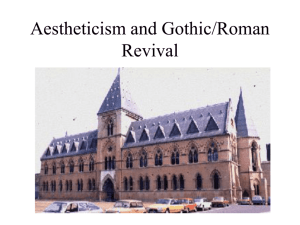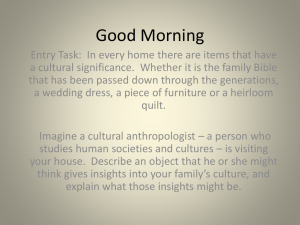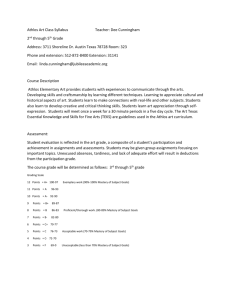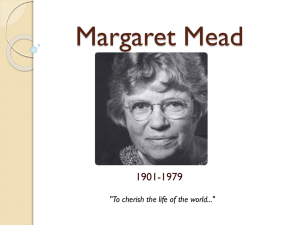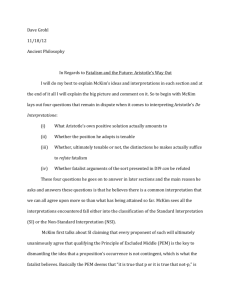Turn of the Century American Architecture (1895-1915)
advertisement
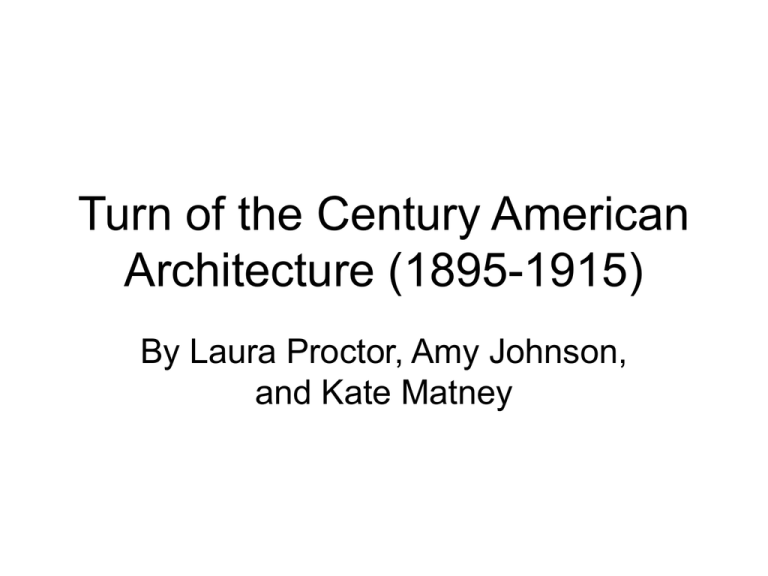
Turn of the Century American Architecture (1895-1915) By Laura Proctor, Amy Johnson, and Kate Matney General Overview of ‘Where we were” • The Victorian Age going on the Elizabethan Era (Suffragettes, women taking over the work force, and the invention of the bra) • Henry Ford invents the Model T; over 15 million sold in America alone! • Isolationism prevails— Germany invades Belgium 1914, U.S. finally enters war in 1917 General Architectural Themes • • • • Early Modernism Gothic Revival Beaux-Arts Craftsmanship Early Modernism • First skyscraper built in Chicago 1885 (ten stories), but Louis Sullivan later created the most influential shape – Geometric cube – Base floor entrance – ‘honeycomb’ of identical floors to stress verticality – On top service floor and cornice The Wainwright Building Evolution of Sullivan’s Skyscraper— responding to the urban context; The Bayard Building, NYC, 1897 The Gage Building, Chicago 1898 Carson-Pirie Scott Department Store, Chicago, 1899-1904— horizontal velocity Sullivan’s apprentice— Frank Lloyd Wright’s First Life • Modern interpretation of Jeffersonian theme— continuity and expansion: Frank Lloyd Wright House, Oak Park, Illinois, 1889 Cross-axial plan • River Forest, Illinois, 1898-1901 Craftsmanship • Craftsmanship was found mainly in the western states like California. It was generally a bungalow house, with a low, overhanging roof to provide shade. The title of craftsmanship was derived from the idea that the house should be natural, and gardens were an integral part of this. The Robert Roe Blacker House First Floor Plan Gamble House Floor Plans First Church of Christ Science Interior Beaux-Arts Style Architecture 1885-1920 -After the World’s Columbian Exposition in Chicago in 1893, this style of architecture took off in America. The exposition is also accredited with sparking the City Beautiful movement -Also referred to as Classical Revival, Academic Classicism, Neoclassicism, and Renaissance Revival -Beaux-Arts represents a mixture of styles, borrowing from Greek and Roman models as well as Renaissance forms. This architectural style emphasizes grandness, even in traditional detailing and focuses on symmetry -Bernard Maybeck, Frank Furness, Charles McKim, and Henry Hobson Richardson were architects who produced Beaux-Arts style designs. Many of these architects, as well as Louis Sullivan, studied at the Ecole des Beaux Arts in Paris The World’s Columbian Exposition The Charles Atwood designed Peristyle Bull and Peristyle from the Exposition Boston Public Library 1888-1895 Design Details of the Boston Public Library • Closely based upon the mid 19th century prototype of the Bibliotheque Sainte Genevieve by Henri Labrouste • Designed by the firm of McKim, Mead, and White • Constructed of bearing masonry and stone Richard Guy Wilson wrote, “The (Boston Public) library was the first public building that demonstrated the possibilities of collaborative art, and was the first great example of ‘civic art.’” Library 1st (left) and 2nd Story Floor Plans New York Public Library 1897-1911 Design Details of the Library • Designed by Carrere and Hastings • Carrere and Hastings worked for McKim, Mead, and White before forming their own firm • Constructed of bearing masonry Library Floor Plan Pennsylvania Station 1906-1910 Design Details of Penn Station • Designed by McKim, Mead, and White • Constructed of plaster, steel, and masonry • The original design was demolished in 1964 • Highlights of the design were steel vaults, glass, and cut stone columns over steel
